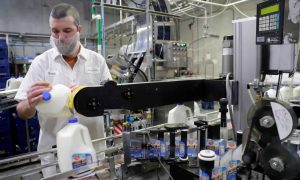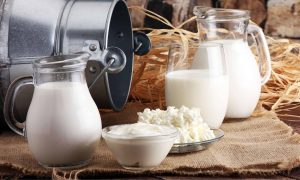
Whey is a by-product of the cheese industry that represents 80 to 90% of the total volume of processed milk, containing 50% of the water-soluble nutrients in milk: 95% lactose, 25% protein and 8% fat. For a long time, it was a difficult waste to dispose of and today it is one of the most used elements in the food industry, but its processing requires an infrastructure that small and medium cheese producers do not have. Its disposal means loss of nutrients and, due to its high flow and organic composition, untreated whey is a severe environmental pollutant.
There are companies that process whey and produce different types of high value-added ingredients, combining separation, demineralization and drying processes. A few weeks ago, with eDairyNews we visited Lácteos La Cristina, a project that with totally Argentinean capitals was born in Buenos Aires, but due to the place of origin of the raw material it understood that the best thing was to relocate to Villa María, Córdoba where they have been producing whey powder since 2006, supplying the domestic market and also exporting to Brazil, Chile, Paraguay, Colombia, Bolivia, Southeast Asia, Japan and China.

Julián González Treglia, Plant Manager, welcomed us at Lácteos La Cristina and told us that with an operating capacity of 800 tons per month, they offer a solution for the management of effluents to small and medium-sized cheese dairies in the area, thus obtaining the raw material for the manufacture of whey powder only at the cost of freight.

In a process that starts with the reception of the fluid from the cheese factories with between 6% and 18% solids, the whey goes through filtration, cooling, electrodialysis, nanofiltration, pasteurization, drying, crystallization, evaporation, dehumidification, cooling and then it is packaged in its presentations whey powder, 90% demineralized whey powder and 45% demineralized whey powder, It is then packaged in whey powder, 90% demineralized whey powder and 45% demineralized whey powder, in 25 kg heat-sealed polyethylene bags, and then placed in another external bag made of triple stitched Kraft paper, ready for storage.

Whey is no longer a problem, an effluent, a waste, and its recovery has turned it into a precious ingredient for the manufacture of high value-added food products, whose use minimizes its environmental impact while providing an economic benefit. The small and medium cheese producer finds a solution to an item whose management meant a great expense, while generating new business opportunities and contributing to environmental care. This turn of the screw in the industrialization of whey is a win-win situation.
Due to its very good functional properties such as foaming capacity, emulsification, gelling, viscosity, whey, a by-product of cheese production, offers endless possibilities for the manufacture of food, supplements and medicines, and has become an ingredient in ice cream, milk caramel, desserts, cookies, breads, candies, jams, toppings, meat products such as sausages, hamburgers and sausages.
The use of whey as an ingredient results in higher profitability of the final product, in addition to conferring desirable properties such as shorter fermentation time, nutritional and functional enrichment, increased solids without higher fat content, longer shelf life, improved sensory properties such as flavor, softness, brightness and consistency.
But for consumers, what does it mean when whey is included as an ingredient in their food?
The appearance of whey as an ingredient for the food industry not only means an environmental care solution, the generation of a new industry, a greater economic return for manufacturers and more possibilities for the elaboration of traditional and new foods, but also benefits the consumer because it has proteins of high nutritional and biological value, high content of essential amino acids, even higher than caseins and egg proteins, as well as a high content of branched-chain amino acids (isoleucine, leucine, valine). It has a high concentration of calcium and lactose and is a source of water-soluble vitamins and phospholipids. In short, whey has a high nutritional value, because it is rich in mineral salts, vitamins and provides all the amino acids necessary for the organism, favoring protein synthesis, muscle mass gain, helping to prevent the loss of muscle tissue, among other biological functions. It could be said that consumer satisfaction is also part of the win-win circuit mentioned a few paragraphs above.
Consuming dairy products is good for you, and producing them is a noble and complex task that begins on the dairy farm with the birth of a calf, mobilizing hundreds of sectors, trades and professions, generating work and value at every step until reaching the industry, where science and technology also make their mark in the creation of solutions and resources so that we are better fed every day.
Have you already drunk your glass of milk today? What are you waiting for?
Valeria Guzmán Hamann
EDAIRYNEWS























